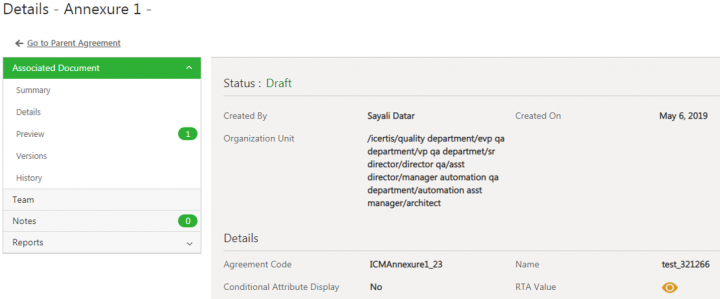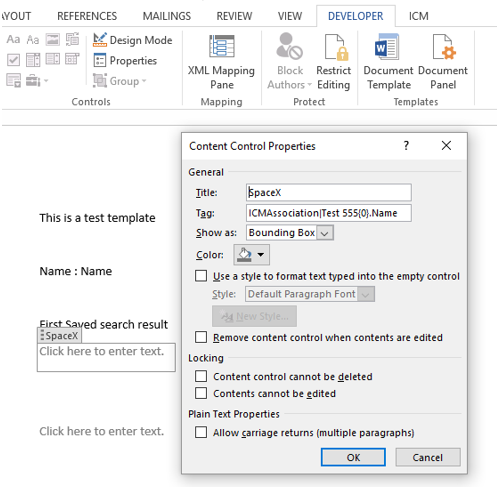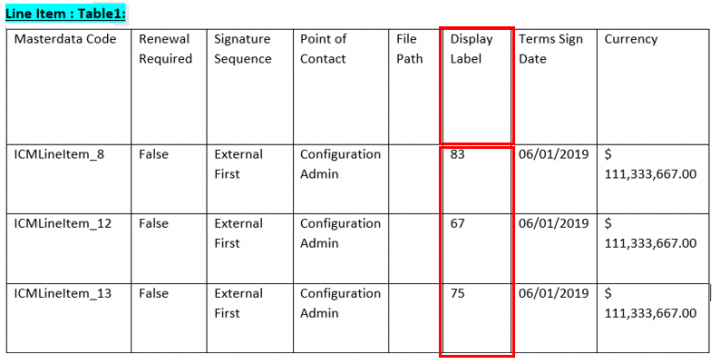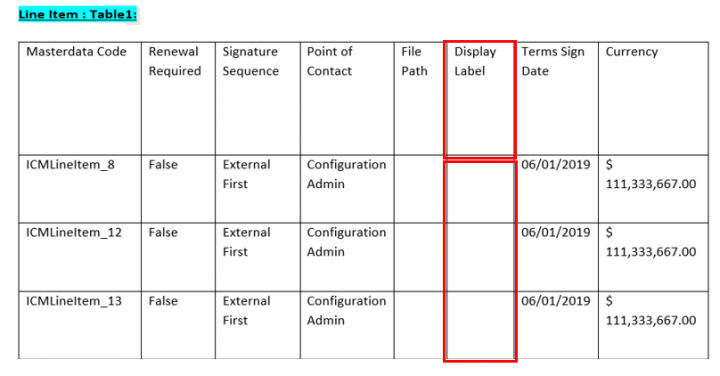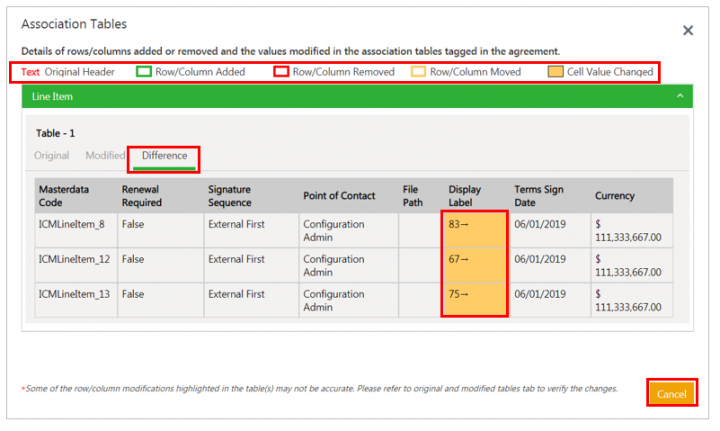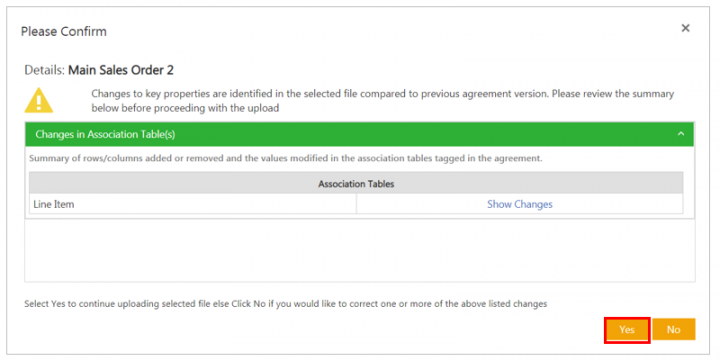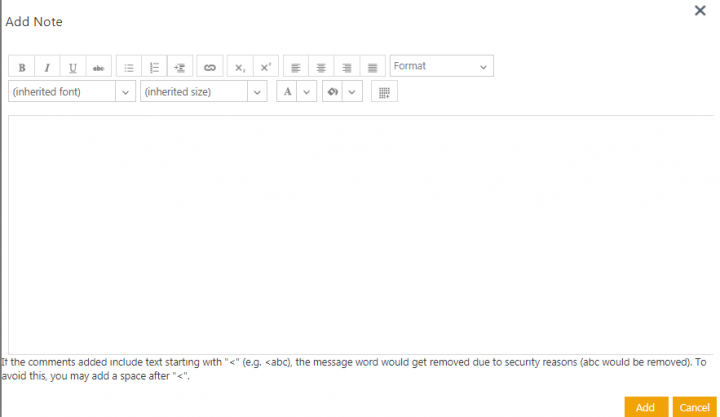Contents
- 1 Association Management
- 1.1 Searching an Associated Document
- 1.2 Creating an Associated Document
- 1.3 Understanding Multi-Party Agreements
- 1.4 Approving an Associated Document
Association Management
Associated documents are additional legal documents or supplementary materials added to an Agreement.
Associated documents can be:
- Created using a Template
- Uploaded into ICM
- Prepared from the Associated Document Contract Type model
From the Association Management tile you can:
- Search an Associated document
- Create an Associated document
- Approve an Associated document
Searching an Associated Document
Use Search feature to get relevant search results. You can use various methods to narrow down your search and locate the specific Associated Document you are looking for.
To search Associated Documents:
1. Click the Association Management tile on My Dashboard. The Association Management page opens.
2. Search for a specific Associated Document by using any of the following options:
- Under Search For:
- Click the Select Field list, and then select the appropriate item from the list. The relevant results are populated. For example, if you select Status (to filter Associations according to various status' of associated documents), list of various states of Associated Documents is displayed. You can then select appropriate status such as Approved, draft.
- The number in the bracket denotes the number of available items which contain the search term. You can select multiple options at the same time.
- To narrow your search, type free text in the Custom Keyword box, and then click Apply.
- Alternatively, type keywords in the Refine Search here box. A list of relevant Associated Documents opens.
- You can further narrow your search by using any of the following methods:
- "..." - Type the search term in double quotation marks. It shows existing Associated Documents that include the exact search term.
- ...* - Type the search term in star characters. It shows existing Associated Documents that include the exact search term.
- ... - Prefix * to the search term. It shows existing Associated Documents that end with this term.
- ...* - Suffix * to the search term. It shows existing Associated Documents that start with this term.
- "..." - Type the search term in double quotation marks. It shows existing Associated Documents that include the exact search term.
Creating an Associated Document
In ICM, you can create the Associated documents separately.
To create an Associated document:
1. Click the Association Management tile on My Dashboard. The Association Management page opens.
2. Click the Create Association tile. The Create Association page opens.
3. Select Parent Agreement by clicking the icon. The Lookup Search window opens.
4. Select the parent Agreement that you want the document to be associated with. You can select only Parent Agreement.
5. Click Select. This takes you back to the Create Associated Document page with the selected document displayed in the Parent Contract field.
6. Select the Category.
7. Select the Contract Type Name.
8. Click Next. Metadata section of the Create Association page opens. Click the Go to Parent Agreement link to access the relevant Parent Agreement.
9. In the Metadata tab, enter the appropriate information for the attributes.
10. Select the File Path field to upload the Associated document.
11. Click Create. The Associated Document gets created and the Agreement Details page opens. You can see the Associations here. ICM allows you to assemble both text and images in the Association file in the main Agreement document.
Understanding Multi-Party Agreements
Additional platform support for Associations have been added. These enhancements support full platform functionality for Association metadata that was previously available only for Agreement metadata. The additional enhancements fall into three main areas:
- Ability to use Association Attributes in Rules
- Ability to tag Association Attributes in Agreement and Clause Templates
- Ability to use faceted search for Association Attributes from the main Search page
- Ability to compare Association tagged as a table across versions
One of the primary functional drivers for these new capabilities is to enable full functionality for Multi-party Agreements.
Making the Association type itself available while selecting Attributes
Building on the functionality around one-to-many relationships in Associations, ICM provides the ability to reference Association counts in Rule criteria. Since Rules can now be written for individual Attributes of an Association, it enables Admins to write Rules based on the count of Associations that have been added of a specific type. All attributes for Associations are available for the given Rule conditions and every Association has a specific sequence number so that the metadata of that sequence is tagged in the Template. You can search selected values of an Agreement or an Associated Document. For a multi-division Agreement, ICM supports writing Rules based on individual instances of the multi-value attributes.
When Rules are written based on the Attributes of the Association, the rules support tagging of the Metadata that belongs to the association. The associations may either be parent-child or peer. After the content control tag is entered, the value of the associated instances’ metadata is placed in the content control as shown in the example below.
Introducing a Content Control tag for Association Metadata
You can create a saved search to get the Association attribute and assemble it in the Agreement. You can sort any of the available columns. The name of the saved search is used to tag that association’s Metadata into the Template. This feature works only on Publish Agreement and Edit Agreement.
These changes to the attribute are done by editing the content control in Word manually. The example below shows the content control tag.
Note: This is not available in ICM Word Add-in.
Example:
Editing a content control tag:
- 1. To tag the association’s metadata to the clause, edit the control tag as follows:
ICMAssociation I AssociationSavedSearchName{0}. ICMClientContactPerson
where,
- the selected Contact Person from the Contract Party association’s sequence is 1.
- The index is a zero based index. 0 means 1st instance, 1 means 2nd instance, and so on.
- The sample content control will look as follows:
Click here to enter text.
Adding a content control tag:
- Check if the Developer ribbon is available in the Word menu. To enable it, go to:
File -> Options -> Customize Ribbon -> Enable Developer
- Select Plain Text Content Control -> Properties and add the attribute’s display name in the Title.
- Add ICMAssociation|AssociationSavedSearchName{index}.{Attribute’s Technical Name}
where,
- ICMAssociation: This is static and does not change.
- AssociationSavedSeachName: As explained above.
- Index: This is a zero based index. 0 means 1st instance, 1 means 2nd instance, and so on.
- Attribute’s Technical Name: The technical name of the attribute of Association, such as, ICMCoutryName, ICMPartyName, and so on.
Comparing Association tagged as a table across Agreement versions
The functionality of alerting users on redlining of changes in Association tagged as a table is visible through the Versions tab of the Agreement document. Let’s see an example where the user edits a table tagged as Association and then uploads a revised Agreement to ICM and how ICM alerts the user regarding the changes made in the table tagged as an Association.
To edit an existing Agreement where a table is tagged as an Association:
1. Click the Agreement Management tile on the Dashboard. The Agreement Management page opens.
2. Click the View Record icon next to the Agreement in which you want to edit the Associated Document table. The Agreement Details page opens. For example, Main Sales Order 2.
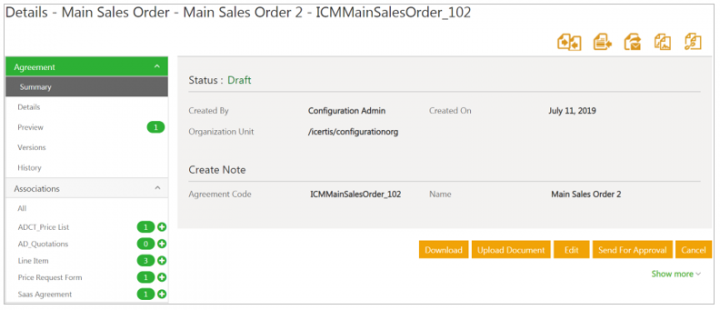
3. Click Download to download the Agreement. The Agreement gets downloaded in Microsoft Word document (.Docx) format.
4. Edit the Associated Document table. For example, let’s remove existing numbers 83, 67, and 75 from the cells of the Display Label column of Line Item: Table1.
5. Click Save.
6. Click Upload Document in ICM. The Upload Document window opens.
7. Click Select File to select the revised Template.
8. Click Upload File to upload the revised file. The Please Confirm window opens with a message Changes in Association Table(s).

9. Click the Show Changes link to view the changes made in the Association Tables. The Association Tables window opens highlighting the removed values (83,67 and 75) in the Display Labelcolumn.
10. Click Cancel to return to the Please Confirm window.
11. Click Yes to upload the revised Associated Document.
12. Click the Versions tab to view the different Agreement documents with revised Associated tables.

13. Click the Show All Details link to view the changes in the Association Table(s).
To view Associated table changes through ICM Scribe Word Add-in
When modifications are made using the ICM Scribe Word Add-in, a user can view the changes in the Associated table of the published Agreement.
Approving an Associated Document
When the Associated Document is created, the approval rule triggers, and the document is sent to the approvers that are set by the approver rule. If you are an approver, you can approve or reject the associated document.
To approve an Associated Document:
1. Click the Tasks tile on My Dashboard. The User Tasks page opens.
2. Click the Association name link that you want to approve. The Associated Document Details page opens.
3. To Approve the document, click Approve. To reject the document, click Reject. A notification is sent to the Primary and Secondary Owner of the document every time an approver approves or rejects a document.
4. If you click:
- Approve: The Add Note window opens. Type your comments and then click Add. The associated document gets approved.
- Reject: The Add Note window opens. Type your comments, select the appropriate reason code, and then click Add. The Associated Document gets rejected and goes into the Draft state.
You can enable, disable, reassign, or remove approvers using the respective buttons from the Team tab of the Association after it is created. This can be done for the Associations that are in Approved or Waiting for Approval states.
If you are an approver of the Associations for Agreements and Amendments, you can request more information for an Association that is in Waiting for Approval state using the Need More Info button. You can also remove yourself as an Approver using the Remove Mebutton for an Association that is Waiting for Approval.
Related Topics: Agreement Management | Agreements Page | Contract Type | Saved Searches | Adding Supporting Documents to an Agreement




